THIS week we have a story 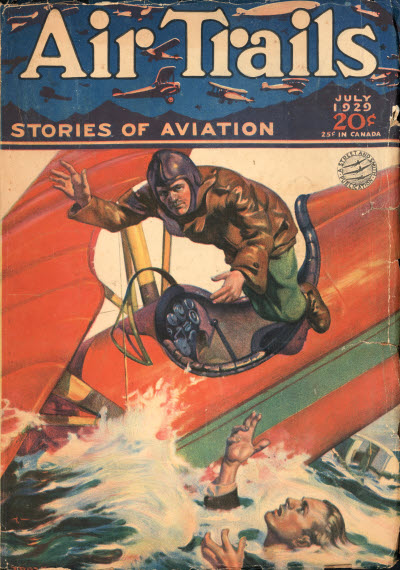 from the prolific pen of Jackson Scholz. Scholz originally shot to prominence in the world of sports as a record holding sprinter, taking a gold medal in the 4×100m Relay at the Antwerp Olympics in 1920 and Gold in the 200m and Silver in the 100m at the Paris Olympics in 1924—the Olympics depicted in the movie Chariots of Fire (1981) in which Brad Davis portrayed Scholz. Scholz even appeared in an American Express commercial with Ben Cross at the time.
from the prolific pen of Jackson Scholz. Scholz originally shot to prominence in the world of sports as a record holding sprinter, taking a gold medal in the 4×100m Relay at the Antwerp Olympics in 1920 and Gold in the 200m and Silver in the 100m at the Paris Olympics in 1924—the Olympics depicted in the movie Chariots of Fire (1981) in which Brad Davis portrayed Scholz. Scholz even appeared in an American Express commercial with Ben Cross at the time.
Knowing you can’t run forever, Scholz started writing stories and submitting them to the magazines. He drew upon his own experiences, which is probably why most of his pulp stories are sports stories, but he did find time to pen some detective stories, a few westerns, and a couple dozen aviation tales—including four for Air Trails with Jiggs Neely. Neely is a young Pensacola graduate just as Scholz himself had been. In “Golden Wings,” Jiggs Neely tries to play it cool and keep in line after being told his actions could jeopardize his chances of earning his wings in the coming week. From the pages of the July 1929 Air Trails, it’s Jackson Scholz’ “Golden Wings!”
A high-speed story of naval aviation by a pilot-writer who won his wings at Pensacola.
And as a bonus, here’s an article from The Lincoln Sunday Star about how Jackson Scholz keeps busy between running and writing!
Writing and Running Keep Jackson Scholz Busy
The Lincoln Sunday Star, Lincoln, NB • 3 July 1927
|

Jackson V. Scholz, Olympic sprint champion of ’24, who is running for the New York A.C. in Lincoln this week end, is a writer of sports stories. Mr. Scholz published a book of track stories early in the spring and is a frequent contributor to sports magazines.
|
He likes to dance—two or three dances with good dancers—and stop.
He’s devoted to golf, and would play ail the time If he had a portable course.
He doesn’t care for night clubs.
He enjoys reading—a lot. He won a cup in tennis one bright day.
He’s a modest soul, and given to beating himself lightly. He’s unspoiled by many newspaper columns of laudatory acclaim.
He’s “keen” about bus riding-on top of a Fifth avenue bus, from Washington arch out to the drive. He likes to be with people, to watch them, to study them psychologically, but he does not claim to be a student of or to comprehend human nature.
He’s stimulated by an intelligent conversationalist—one whose mind, as he says, is sharper than his, and can turn his “inside out.”
He’s traveled everywhere—the Orient, Asia, the continent, and any number of “see America first” tours, but he’s not a collector. If he brings anything back to his apartment near Riverside drive, it’s different from anything else that has been in that apartment.
Scholz Not Blatant.
You can see him. A normal sort of young man. Jackson Scholz, with a college degree and nice blue eyes and dark gray spring suit with just the right cut. Not especially tall, very quiet, walking softly, not at all the blatant athletic type of young man who adorns the posters.
Yet Jackson Scholz has the fastest legs In the world, legs as famous as “we,†and that have made his name known round the world for their performances on half its continents.
He’s Olympic champion in the 200 metres, having run this event in the Paris Olympics in 21 6-10 seconds in 1924. the only American to come through with a sprint championship In those Olympics. He has been national A.A.U. champion in the sprint, and formerly was holder of the sprint championship—for the century and the 220 yard dash—in the Missouri valley conference for three years.
The winged-foot sprinter, here for the A.A.U. meet, was developed by Coach H.F. Schulte in his University of Missouri days, of which university Jackson Scholz is a graduate. He thinks a lot of his former coach, and gives much of the credit for his success to his training. Jackson Scholz knew in his high school days that many were destined to gaze at his fleeting heela, but it was Coach Schulte who developed him and taught him the fine points of the running game.
Writing Sport Stories
Jackson Scholz is one of sparkling names in Lincoln this weekend, but he hasn’t earned all the sparkles with his feet. Some are due to his mind, and his fingers.
When he isn’t running, he’s writing. Writing with a purpose.
The first story he wrote, he sold, which was happy news for him and sad for those ambitious souls who send their manuscripts on a world tour in hope of a sale. Since that day, he’s been a regular contributor to sport story magazines.
When the legs refuse to speed longer, writing is to be his profession. Possibly a little coaching on the side, for he thinks he would like to pass on to the newcomers the knowledge he has gained in his years of sprinting, but most of the hours to be devoted to writing. Some sport stories, but largely fiction.
It’s not an ambition without foundation, because Jackson Scholz is the writing runner.
He has just published a book of short stories, “Split Seconds,†tales of the cinder track. The stories are told by an old coach, and it is Coach Schulte upon whom Mr. Scholz has modeled his coach, who solves the manv problems of his young athletes. Grantland Rice, sport feature writer for the New York Herald-Tribune. wrote the introduction
Keeps Detailed Diary.
On his trips hither and yon. Mr. Scholz keeps a detailed diary. It has some 50.000 words, sans notes, at the moment, and some day it is probable it will appear for public perusal. He has just sold a 30,000 word autobiography.
Jackson V. Scholz isn’t a writer because he hasn’t a knowledge of other jobs.
The high boots and the broad hat of the landed squire appealed to him, and for three years he perused agricultural lore in college. A couple of years of milking cows and cultivating corn convinced him of the error of his thoughts.
During the late unpleasantness, he was a pilot in the navy flying corps, that occupied him in 1918 and 1919. He returned to graduate in journalism at Missouri.
Followed the 1920 Olympics, when he was a member of the winning relay team at Antwerp, and on an exhibition tour of the Scandinavian countries.
Real estate in Detroit intrigued him for a time, but for a brief time. With dreams of becoming a merchant prince he attached himself to a hosiery concern in New York City. Fifteen or twenty dollars every Saturday night does not make affluent living in the metropolis.
Became Newspaperman.
His journalism certificate came to hand and he was with the United Press, a newspaper wire service, for a year and one-half, most of the time in New York. Editing wires—making 2,500 words into twenty-five lines—lost its thrill after a time and Mr. Scholz returned to more creative lines of endeavor.
During his U.P. days, he wrote and sold his story, the first one. That aided and abetted his later decision.
In the fall of ‘23. he decided he wanted to make the Olympics at Paris, and he trained for eight months. In the final tryouts. be made a new world’s record for the 200 metres, a record that still stands. He went to Paris, winning honors of which the world knows.
While competing in the Irish Olympics at Dublin, he received an invitation from Japan for a series of meets. Three Americana and one Finn toured Japan for two and one-half months. Competing races, which, upon insistence, Mr. Scholz admits he won all of the dozen, and speeches, many speeches, filled the days.
Traveled With Hahn.
In 1925, Jackson Scholz and Lloyd Hahn, Nebraska’s fleet footed boy, were in New Zealand. “Fifteen meets and twice that many speeches,†Mr. Scholz characterizes the seventy-five days.
Nor are all his records sprint records.
He was the oldest runner in the last Olympics. He is the oldest runner actively participating in sprint circles today. Yet, he only won his first gold medal in the eighty-five pound championship of southern California in 1911, so yet thirty or forty years before he loses his speed and spryness.
If this man, whose record shows that he has outsprinted Charley Paddock in seven out of ten races in which they have been matched makes the Olympic team in 1927, he will be the first sprinter to make the trip three times. Charles Paddock and Loren Murchison are also entering the tryouts for the 1928 Olympics in Amsterdam, and if all three enter it will be the first trio to make the three contests.
In August, Mr. Schole sails for Germany to enter a meet there. The first one will be held September 4.
But the end will come, of course Mr. Scholz knows it.
“Of course, some day some youngster is going to get to the tape first. I know it. It’s inevitable.
“If I had it all to do over again, I’d do just as I’ve done. I wouldn’t have missed the fun and the competition for a couple of life times.â€
Children’s Applause Pleasing.
“The sincere adulation of the children means as much as anything. The cries of the crowd, the back slapping, and hand wringing of people is pleasant, we iiKe it, but there’s something fine in this worship of the children.
“I like to’ think that possibly we mean something real to them, that we are passing on some worthwhile spirit to these youngsters.”
The holder of the 200 metres record has his sense of humor. He has seen funny moments in his dashing about the world.
It was at Histon, near Cambridge, and Jackson Scholz and Cyril Coatee, a Canadian sprinter, shared honors that day with an English country fair. The whistles and the bells and the shrill music of the carnival rent the air, and the two sprinters did their best as athletes of honor on a grassy track that tipped perilously down hill.
Throngs Left for Tea.
In the midst of the meet, the throngs disappeared. The noise stopped. The two looked dismayed as they trotted back up the track to peer about.
It was tea time. That was all, but suffient.
The two sprinters were taken into the midst of the crowds who had gathered in the gardens of this estate of some of England’s nobility, where the joint entertainment was being held.
“Can you see us.” exclaimed Mr. Scholz.
“The two of us-in our sweat suits, hair on end, faces partially lost under England’s dust-in the center of these chiffoned ladies and men dressed for tea-and Englishmen are most meticulous in their dress-balancing our tea cups on our knee. I shall never forget it.
“When the hour was over, we went back to the track, and the meet continued.â€
Mr. Scholz is also the holder of the mid-Atlantic championship.
“As tar as I know no one else has ever aspired to it.”
Raced on Berengaria.
It was on the Berengaria returning to America that some persons arranged an entertainment. Mr Scholz gained the championship of the 70-yard dash, and still holds it.
Of all those with whom he has competed. Mr. Scholz enjoys the English most.
“The English are the finest sports,” he declares. “They are better winners, and better losers, and they play the game for itself.”
Mr. Scholz knows of no reason, why athletes should not enter professional circles. He does not believe that sprinting will ever be a professional sport, but he does believe in the policy of those who give up their amateur standing.
“I know of no reason why a person should not capitalize his natural talent, in this case his athletic ability, as same as would a person with a voice or the ability to play the violin. I believe they should a11 be considered from the same viewpoint.”
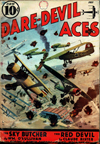 THIS month’s cover, as your practiced eyes can probably see, gives the spotlight to German aircraft, and to the Henschel aeroplane in particular. The five black figures represent a variety of Henschels, but the Hawkers which appear on the cover itself, have not been included. This is because most of you fellows know enough about Hawkers, already, to fly them or draw them in your sleep.
THIS month’s cover, as your practiced eyes can probably see, gives the spotlight to German aircraft, and to the Henschel aeroplane in particular. The five black figures represent a variety of Henschels, but the Hawkers which appear on the cover itself, have not been included. This is because most of you fellows know enough about Hawkers, already, to fly them or draw them in your sleep.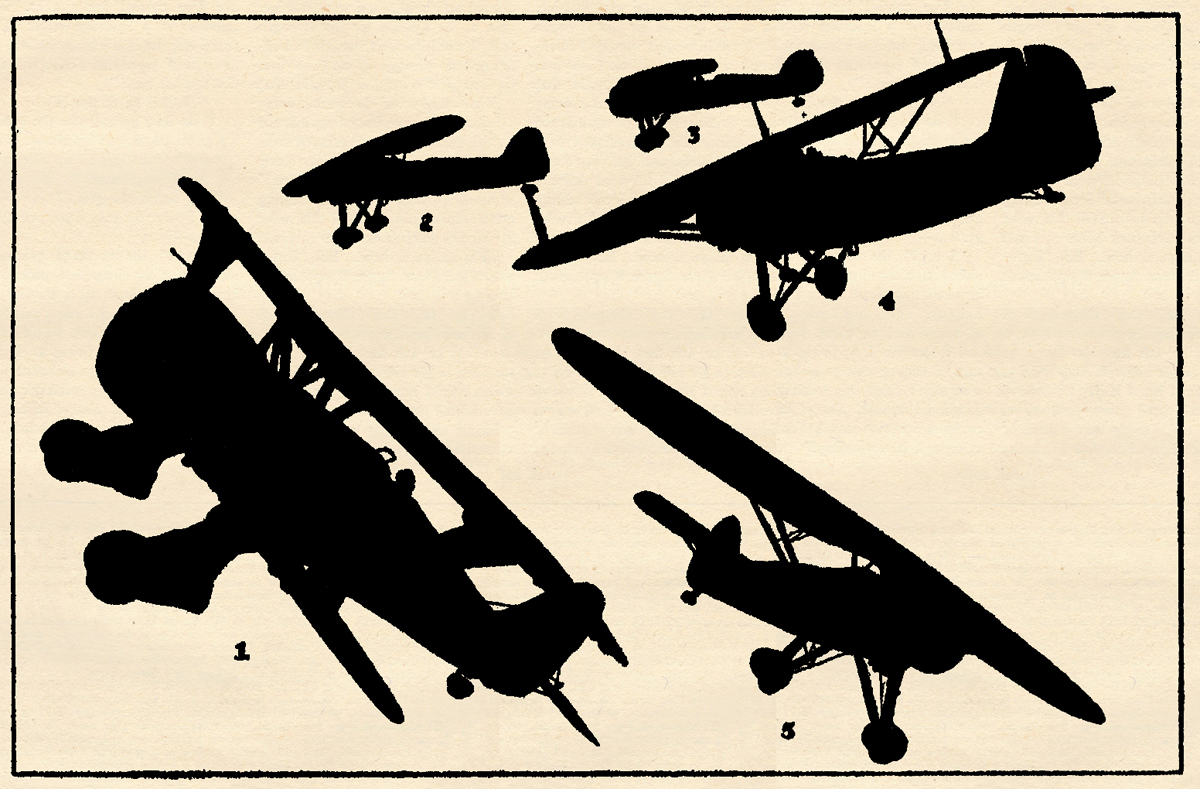
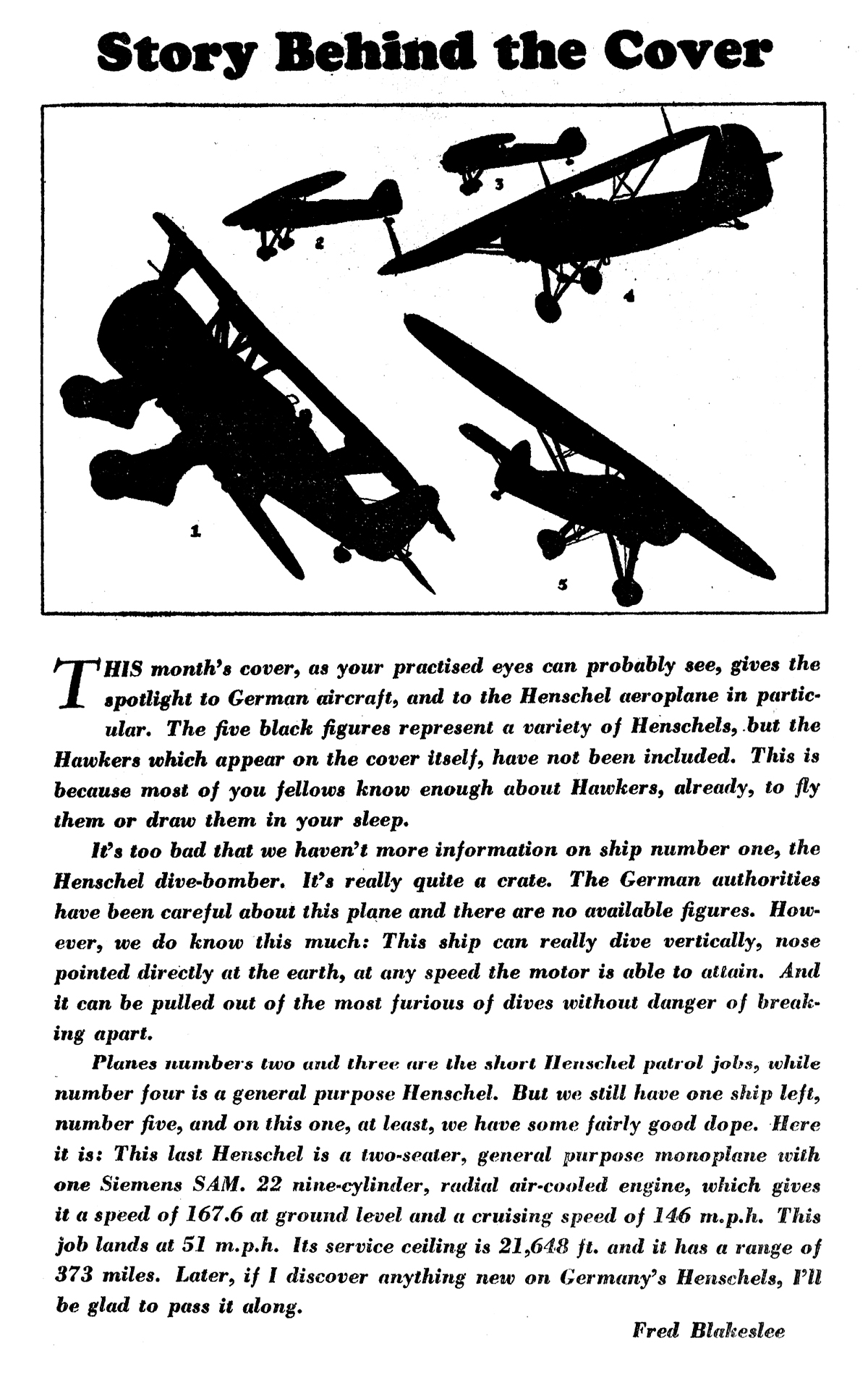





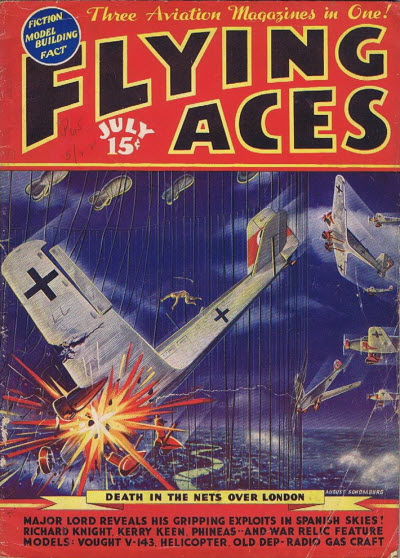 You heard right! That sound can only mean one thing—that Bachelor of Artifice, Knight of Calamity and an alumnus of Doctor Merlin’s Camelot College for Conjurors is back. Yes it’s the marvel from Boonetown, Iowa himself—Lieutenant Phineas Pinkham—and he goes to Gay Paree in this latest Roar! You’ve read about
You heard right! That sound can only mean one thing—that Bachelor of Artifice, Knight of Calamity and an alumnus of Doctor Merlin’s Camelot College for Conjurors is back. Yes it’s the marvel from Boonetown, Iowa himself—Lieutenant Phineas Pinkham—and he goes to Gay Paree in this latest Roar! You’ve read about 

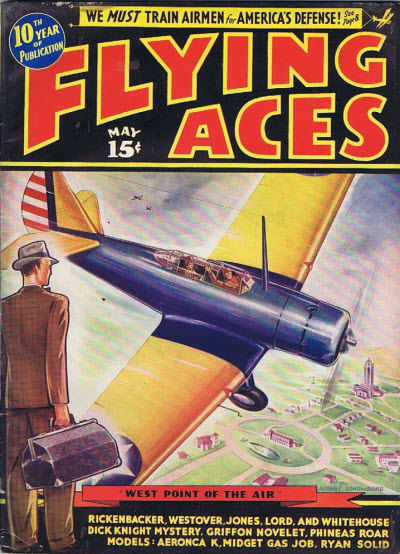 had a story in a majority of the issue of Flying Aces from his first in January 1930 until he returned to the Navy in 1942. Starting in August 1931, they were stories featuring the weird World War I stories of Philip Strange. But in November 1936, he began alternating these with sometime equally weird present day tales of espionage Ace Richard Knight—code name Agent Q. After an accident in the Great War, Knight developed the uncanny ability to see in the dark. Aided by his skirt-chasing partner Larry Doyle, Knights adventures ranged from your basic between the wars espionage to lost valley civilizations and dinosaurs. Secret agents from a dozen countries have all rushed into the Mediterranean for something—but what? Knight and Doyle set out to find out just what it could be. The carrier from which they’ve just taken off mysteriously and soundlessly explodes leaving nothing behind! Just what is out there?
had a story in a majority of the issue of Flying Aces from his first in January 1930 until he returned to the Navy in 1942. Starting in August 1931, they were stories featuring the weird World War I stories of Philip Strange. But in November 1936, he began alternating these with sometime equally weird present day tales of espionage Ace Richard Knight—code name Agent Q. After an accident in the Great War, Knight developed the uncanny ability to see in the dark. Aided by his skirt-chasing partner Larry Doyle, Knights adventures ranged from your basic between the wars espionage to lost valley civilizations and dinosaurs. Secret agents from a dozen countries have all rushed into the Mediterranean for something—but what? Knight and Doyle set out to find out just what it could be. The carrier from which they’ve just taken off mysteriously and soundlessly explodes leaving nothing behind! Just what is out there?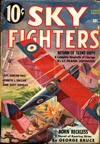



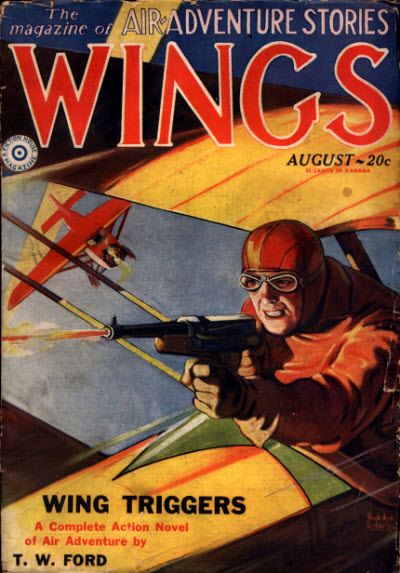 a story from the pen of C.M. Miller! Miller is known to Age of Aces readers as the author behind
a story from the pen of C.M. Miller! Miller is known to Age of Aces readers as the author behind 

 from the prolific pen of Jackson Scholz. Scholz originally shot to prominence in the world of sports as a record holding sprinter, taking a gold medal in the 4×100m Relay at the Antwerp Olympics in 1920 and Gold in the 200m and Silver in the 100m at the Paris Olympics in 1924—the Olympics depicted in the movie Chariots of Fire (1981) in which Brad Davis portrayed Scholz. Scholz even appeared in an
from the prolific pen of Jackson Scholz. Scholz originally shot to prominence in the world of sports as a record holding sprinter, taking a gold medal in the 4×100m Relay at the Antwerp Olympics in 1920 and Gold in the 200m and Silver in the 100m at the Paris Olympics in 1924—the Olympics depicted in the movie Chariots of Fire (1981) in which Brad Davis portrayed Scholz. Scholz even appeared in an 